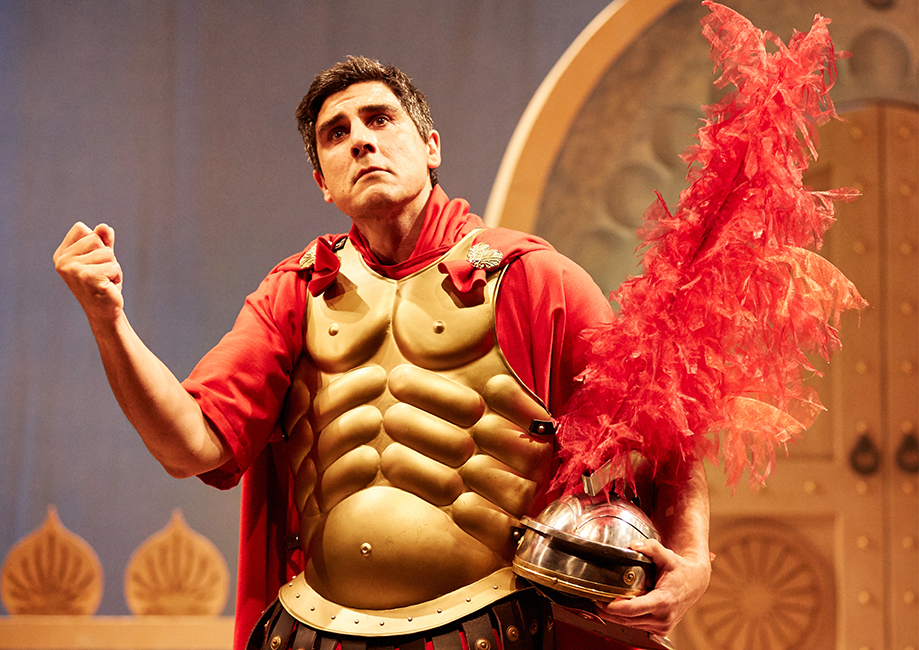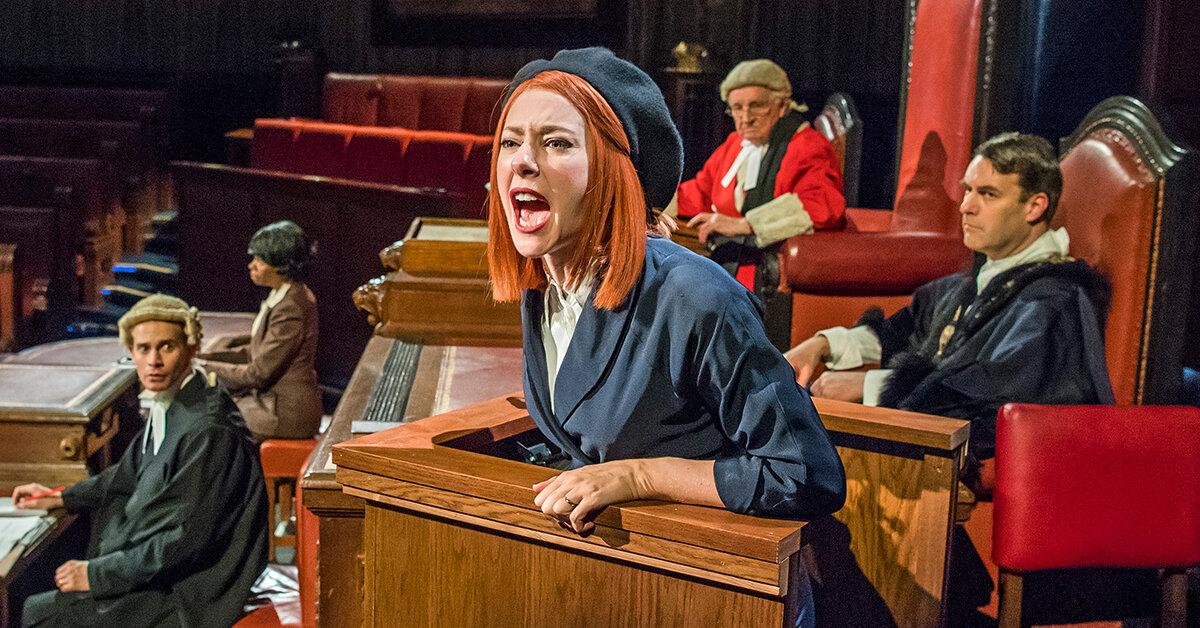
Ben Hur: A Tale of the Christ, Lew Wallace’s never-out-of-print, eight-part epic novel became an instant classic and a long-running best-seller after its publication in 1880 – it was even blessed by the pope. It was adapted into multiple films including the legendary MGM version which featured 300 sets, 100,000 costumes, 1,500,00 props, 50,000 extras, 365 speaking parts and 78 horses as well as a famous chariot race which took months to film. The producer and instigator of the film suffered a heart attack towards the end of the process, reportedly due to the stress of making that film. There have been arena-productions of adaptations of the book with real live horses. With its epic, biblical storyline and the drama of its main themes of betrayal, revenge and redemption, Lew Wallace’s Ben Hur is an Everest of a story to tell.
What I’m trying to say is – Ben Hur is a behemoth.
So of course Patrick Barlow wanted to do it with four people.
From anyone else, this would be an insane suggestion. Even from Patrick, it’s still an insane suggestion. But his Ben Hur is a beautiful example of the “Barlovian style” – grand theatrical epics intended for a cast of thousands being performed by an inadequately small but more than adequately scrappy group of actors. After the success of The 39 Steps – which was put on at the Tricycle Theatre with Fiery Angel before then transferring to the West End – we were intrigued when we heard that Patrick wanted to adapt Wallace’s classic.
By Patrick’s own admission in a conversation to me, he first began doing small cast epics “because I had no money whatsoever, and nobody would employ me for anything.” Determined therefore to write and perform his own show, he made his first attempt with a one-man version of The Charge of the Light Brigade. But one-man shows are lonely, so he got another actor on board, and thus the National Theatre of Brent was born.
The National Theatre of Brent saw a fictional duo, the two-man theatre company comprised of Desmond Olivier Dingle and his hapless assistant, attempt to put on great works of theatre, but despite their ambitious aspirations, things often went awry. “Desmond” was played by Patrick Barlow, and his other half has been played by a number of renowned actors: Julian Hough, Jim Broadbent, Robert Austin and John Ramm. The National Theatre of Brent wwas prolific in its work, and garnered a nomination for an Olivier Award for Best Comedy.
Barlow’s distinctive writing style began to form through his work with the National Theatre of Brent, and of course a developed version of this style is present in his long-running West End hit The 39 Steps, in which a mere four actors attempt to act out the Hitchcock classic on stage. The style is also present in our Ben Hur.
“The greatest Laurel and Hardy film is when they’re trying to pull a piano over a ravine on a rope ladder being chased by a gorilla. That’s my kind of comedy – in other words, impossible. It could never work, and yet somehow it does.”
So why Ben Hur? Patrick explained to me that he was exposed to the story when he was eleven, “and always wanted to write a version of it. But every time I tried, it turned out sort of unintentionally funny. So I thought, why not make it intentional?” The distinctive style of the piece means you have to ride the balance between fast-paced, heightened farcical comedy and truthful acting. It also requires real accuracy with the lines, as the piece is very linguistically difficult and rhythm is all-important to comedy. There are so many mistakes intentionally written into the text for comedic effect, and you have to train yourself not to automatically correct them.
In Tricycle Theatre draft of Ben Hur, the play is being presented by the fictional “Daniel Veil Company”, a troupe composed of four amateur actors. Its leader, “Daniel Veil”, an egotistical but essentially harmless man with great aspirations for his acting career, has cast himself as the title character, Judah Ben Hur. The questions we tackled when taking on this show revolved around: how does the story intersect and interweave with the meta-narrative? How much of the dialogue is amphibious, i.e. serving both storylines at once? It requires some virtuosity to tap-dance on that particular razor’s edge.
What came of it is an irreverent joy with a tiny puppet Jesus, giant automated horses and plenty of audience participation. We had a really diverse range of audiences in for Ben Hur, but inevitably they were all drawn in by the joyful silliness of the audience participation and threw themselves into it – old or young, experienced theatre-goer or total novice. What I learned from working on the show? The impossible is totally possible, and hilariously funny when achieved.
To purchase a copy of Ben Hur, click here, and to learn more about licensing a production, click here.

Kate Chopin in New Orleans: Mother-Daughter Author Duo Collaborate on Historical Book

Heathers The Musical: 10 Facts for 10 Years

